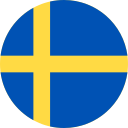Naturvetenskap SAT - Geology
Här kommer du att lära dig några engelska ord relaterade till geologi, såsom "jordbävning", "sediment", "stenbrott" etc., som du behöver för att klara dina SATs.
Recension
Flashcards
Stavning
Quiz

a scientist who studies the Earth's structure, composition, processes, and history, including rocks, minerals, fossils, and geological phenomena

geolog, vetenskapsman specialiserad på geologi
a scientist who specializes in the study of earthquakes and seismic waves, investigating their causes, effects, and patterns

seismolog, jordbävningsforskare
the point on the surface of the earth vertically above the focus of an earthquake where its effects are felt most strongly

epicentrum, centrum
an earthquake caused by underground movement or volcanic activity

jordbävning, skalv
a branch of geology that focuses on the study of volcanoes, volcanic activity, and related phenomena

vulkanologi, studier av vulkaner
the sudden outburst of lava and steam from a volcanic mountain

utbrott, vulkanutbrott
a type of broad, gently sloping volcano formed by the eruption of low-viscosity basaltic lava

sköldvulkan, vulkanisk sköld
a large, basin-shaped volcanic crater formed by the collapse of a volcano after a massive eruption

kaldera, vulkanisk krater
liquid or semi-liquid rock that exists under the earth's surface with an extremely hot temperature

magma, smält berg
particles of rock, minerals, or organic materials that have been transported by wind, water, or ice, and deposited in layers on the Earth's surface

sediment, avlagring
a visible exposure of rock or geological strata at the Earth's surface, often occurring on hillsides, cliffs, or other elevated areas, providing insight into the underlying geological structure

utbud, bergartsutbud
connected with or produced by the heat inside the earth

geotermisk, geothermal
a large, bowl-shaped depression or low-lying area on the Earth's surface, typically surrounded by higher landforms and often filled with sedimentary deposits

bassäng, sänka
the thick, buoyant part of the Earth's crust that forms the continents, composed mainly of granitic rocks and less dense than oceanic crust

kontinental skorpa, landskorpa
a landmass that existed in the geological past

paleokontinent, gammal kontinent
a geological process where one tectonic plate moves under another and sinks into the Earth's mantle

subduktion, nedsänkning
the region of the Earth's interior, lying beneath the crust and extending to the outer core, composed of solid rock that can deform and flow over geological time scales

mantel, jordens mantel
a site where large quantities of rock, stone, or minerals are extracted from the Earth's crust for industrial use or construction purposes

stenbrott, brytplats
a fracture or zone of fractures between two blocks of rock, along which there has been significant displacement due to tectonic forces

förkastning, spricka
solid rock beneath surface materials, forming the Earth's crust foundation

berggrund, grundberget
a type of fine-grained sedimentary rock made from compacted clay or mud particles, known for its ability to split into thin layers

skiffer, lersten
a type of dark, fine-grained igneous rock formed from cooled lava, characterized by its dense composition and typically dark gray to black color

basalt
a fossilized organism that is useful for dating and correlating the strata in which it is found, typically indicative of a particular time period in Earth's geological history

indexfossil, ledfossil
(geology) the injection of magma into existing rock formations underground

intrång, magmainjektion
a method used to determine the age of rocks and minerals by measuring the decay of radioactive isotopes present in them

radiometrisk datering, åldersbestämning med radioaktiva isotoper
(of rock) formed from cooled magma or lava

magmatisk, vulkanisk
related to rocks transformed by intense heat, pressure, or chemical processes, altering their mineral composition and texture

metamorf, metamorfisk
relating to the movement and arrangement of the Earth's crust

tektonisk, relaterande till jordskorpans rörelse och arrangemang
to extract metal from its ore by heating and melting it in a furnace

smälta, extrahera genom smältning
the byproduct of smelting ore that forms a glass-like material, often found as a residue in mining and metalworking activities

slagg, smältrester
the period of time from about 252 to 66 million years ago, characterized by the dominance of dinosaurs and the gradual breakup of the supercontinent Pangaea

mesozoikum, sekundär era
a durable and visually appealing natural rock used for countertops, flooring, and other architectural applications

granit, granitsten
a tough type of rock that starts as sandstone but changes under intense heat and pressure underground, becoming very hard and durable

kvartsit, en hård typ av bergart som börjar som sandsten men förändras under intensiv värme och tryck under jorden
a type of rock formed from clay minerals that have been compressed and hardened over time, creating a dense and often smooth-textured material

argillit, lersten
a mineral with a greenish hue, commonly found in igneous rocks like basalt and peridotite, known for its high magnesium and iron content

olivin, peridot
a hard gray or white rock that contains calcium and is used for making cement or as a building material

kalksten, kalk
a group of minerals found in igneous and metamorphic rocks, typically dark in color and composed of silica, magnesium, and iron

pyroxen, en grupp mineraler som finns i magmatiska och metamorfa bergarter
a soft, white clay mineral formed from the weathering of aluminum-rich rocks, used widely in ceramics, paper production, and as a filler in some medications

kaolinit, kaoliner
a group of minerals that are the most abundant components in the Earth's crust, known for their hardness and varied colors, often used in ceramics and glassmaking

fältspat, fältspat
| Naturvetenskap SAT |
|---|